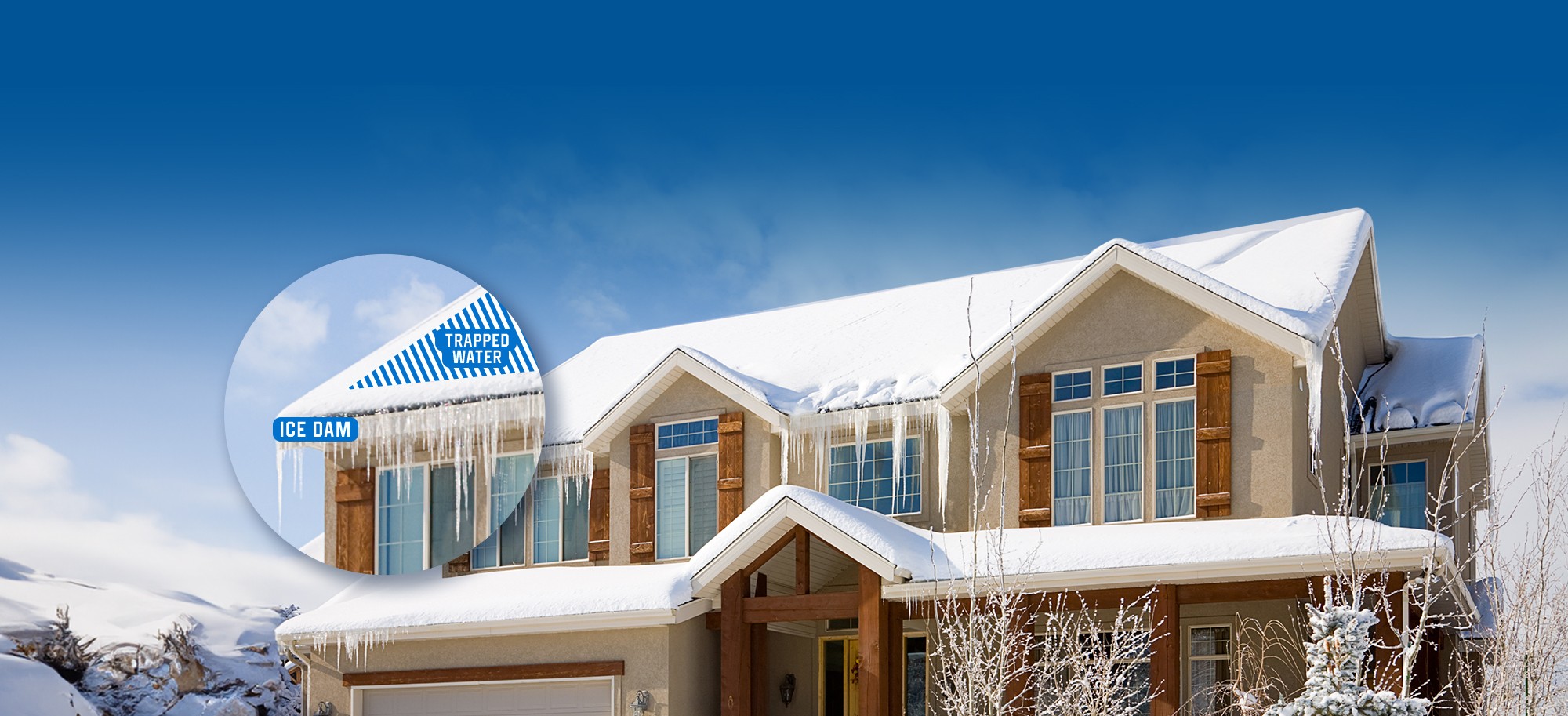Common Signs you have ice damming:
-
Icicles on roof

and gutter edges -
Built-up ice on

exterior walls -
Interior water

damage -
Gutters

stop draining -
Melted snow only

near the top of your roof


Ice dams are walls of ice that build up along the edges of roofs during snowy weather. They occur when heat from inside the home causes snow on the roof to melt. The melted snow then refreezes at the roof's colder edges, forming a dam. This dam prevents proper drainage of melting snow, causing water to pool on the roof. In places like Michigan with cold winters, this phenomenon is frequent and can result in water seeping through the roof, potentially causing leaks and damage.






A homeowners insurance policy may provide coverage for ice and snow-related damage as a result of extreme weather. However, your insurance may not cover damage to your home as a result of long-term wear or previously damaged parts of your home. It’s recommended to reach out to your insurance provider to confirm the coverage provided by your insurance policy.
Yes, if your roof needs replacement or repairs in the winter you should not wait until the spring. Most aspects of replacements or repairs can happen during the winter months to maintain its protective ability and prevent further damage. Contact Premier Roofing today to get your free roof repair quote.
The best way to prevent roof leaks caused by Ice dams or snow is by controlling heat loss from the home. Depending on your timeline and budget, there are several ways to prevent winter roof damage immediately and in the long-term: